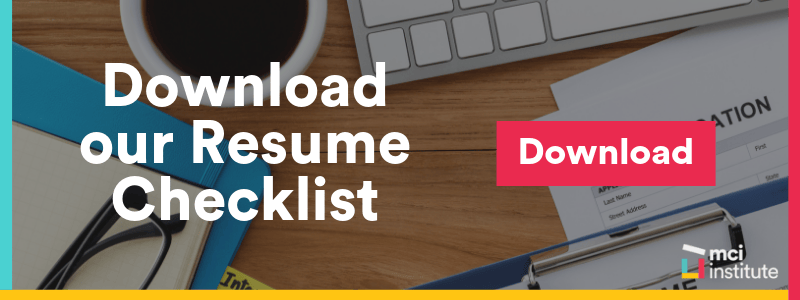.png?width=800&name=Untitled%20design%20(15).png)
When applying for a position, a cover letter should almost always be added in addition to sending out a resume. The cover letter serves a few purposes. First, it helps you focus the attention of hiring managers so they can see exactly how you fit into a certain position and work environment. Second, it might be the only way they are able to judge your communication skills. Your writing skills are on display, and the way you logically tie ideas together is also on show.
Click here to read "The 10 Steps to Building a Resume that Gets Interviews: A Solid Resume Template"
In essence, a cover letter is the same as a sales letter and you are the product or service someone is buying to help fit the needs of a company.
In this article, you will learn how to compose a cover letter that will land you job interviews.
Table of Contents
- Basics of a Cover Letter
- Make an Outline Based on the Job Description
- Composing the Cover Letter
- Editing and Proofreading
- Final Considerations
1. Basics of a Cover Letter
First, let’s take some time to describe the structure of the cover letter. Overall, keeping the cover letter at about one page is ideal (on an A4-sized paper single-spaced), even though length may vary depending on the job description and the application requirements. The letter itself should be about four to five solid paragraphs.
In terms of the content, remember the focus of the letter–it is not exactly about you, but rather it is about them. Hiring managers are always considering how you will bring value to their company or team. Thus, it is important to keep this orientation in mind. Many people write cover letters just focusing on their achievements, attempting to brag about their abilities as best as they can, but with a total lack of perspective in terms of how it fits into the position.
2. Make an Outline Based on the Job Description
Now that we have the basics of a cover letter, it is time to plan. We always recommend that you plan before you write, because the planning will facilitate the writing so that you know exactly what to put down on paper when the time comes.
First, brainstorm a list of your abilities and experiences. Try to be as exhaustive as possible. Chances are that you are not only applying to this job but other ones as well, so this list will be useful when you have to write a cover letter for another job.
Second, find a job description that lists the main responsibilities that the position entails. If there are none, you can inquire about it. When you have the main responsibilities, try to articulate them into three sentences that really capture the spirit of the job.
Third, list the responsibilities out on one side of a two columned paper. On the other side, you will fit your abilities and experiences to where they are most useful in terms of the responsibilities or tasks that will be required in the new position.
| Responsibilities and Tasks | Prior Experiences and Abilities |
|
1. |
|
|
2. |
|
|
3. |
When listing your abilities and experiences, it is good to really illustrate a prior experience you have had and then think about what this experience shows of your ability.
3. Composing the Cover Letter

Now that you have an outline, you can start drafting. Above, we have already mentioned that
you should aim for 4-5 paragraphs. The first paragraph should be the introduction, the middle paragraphs should be the body and the last paragraph should be a conclusion that sums up your abilities and truly expresses your gratefulness for the opportunity.
For the introduction, clearly state your intent—state that you are intending to apply for a specific position. Then, you can have a preliminary thesis statement stating why you believe that you not only match the requirements of the position, but how you will excel in it. Basically, you are leading into the body paragraphs, where you will be giving very specific examples.
For the body paragraphs, use the outline above that you have created. Each responsibility and prior experience combination can make up one paragraph. You can start each paragraph by stating what the position in terms of a responsibility or requirement. Then, describe the prior experience that shows that you have the same type of experience in a similar situation. After, state what abilities these illustrate and how these abilities will fill the need of the company in the position you are applying for.
Lastly, you should have a concluding paragraph. In this paragraph, summarise your skills in one big memorable way that really encapsulates why you are the top choice for this position. Then, write a statement inviting them to further discuss your qualifications with them in an interview.
4. Editing and Proofreading
Now that you have one draft, you will want to go back and edit it. For the first draft, you were busy getting your thoughts down on paper. However, for the second draft, you are really working to refine the language and expressions used so that the ideas really shine. The following checklist can be used:
- 1) Make sure sentences are not too long, making them hard to read, but not too short, making the whole work choppy.
- 2) Vary the words you use so nothing seems to repetitive.
- 3) Make sure the examples of prior experiences you give are concrete. Also make sure you tie these experiences specifically to the requirements of the position you are applying for.
- 4) Make sure the focus of the letter is how you will contribute to the company, rather than merely being a list of achievements.
At this stage, you might want to run the cover letter by another person, just to obtain a different perspective. Another person can tell you what might be unclear or what needs further development.
Finally, after you are happy with what you have, proofread the cover letter. Nothing looks more unprofessional than a typo. Typos will not automatically disqualify you (for most positions) but they do show a lack of care, something that might stick in someone’s mind as a first impression.
5. Final Considerations
 It is always tempting to write a general cover letter to apply to many positions, but avoid this temptation. Each position is different, even if the responsibilities might be similar, because each company has a unique work culture and so you should really show that you have taken this fact into consideration. Also, the more you practice writing cover letters, the better they become as you become more familiar with the job requirements as well as your own experience.
It is always tempting to write a general cover letter to apply to many positions, but avoid this temptation. Each position is different, even if the responsibilities might be similar, because each company has a unique work culture and so you should really show that you have taken this fact into consideration. Also, the more you practice writing cover letters, the better they become as you become more familiar with the job requirements as well as your own experience.
At the same time, you might find yourself using the same prior experiences if the requirements and responsibilities of the positions you are applying to are very similar.
Lastly, make sure you really take steps to differentiate yourself. The prior experiences make that you mention illustrate your unique situation and how you uniquely will be the best fit. So choose these experiences and abilities carefully when attempting to illustrate how you will fulfill their responsibilities.
After going through this comprehensive guide, download our Resume Checklist to make sure you've assessed all the topics that make a perfect resume:
.png?width=113&name=MCIinstitute_RGB_Color_Black-01%20(2).png)




